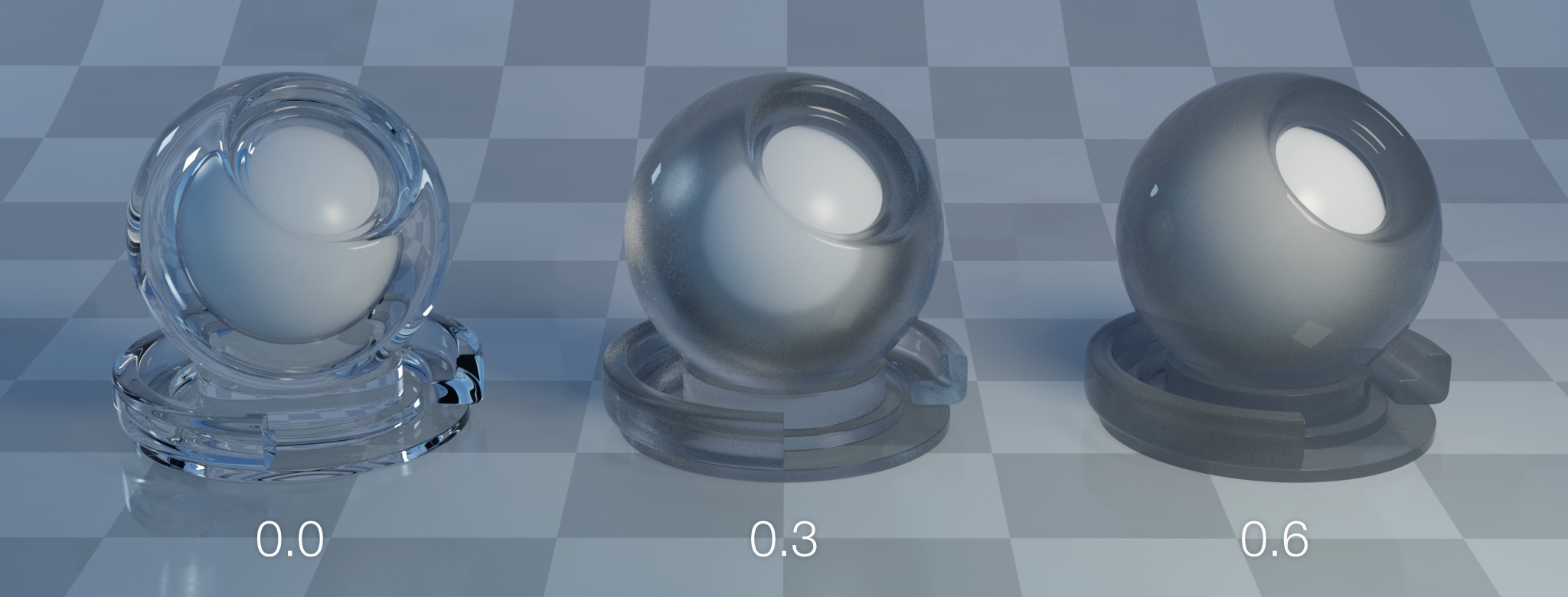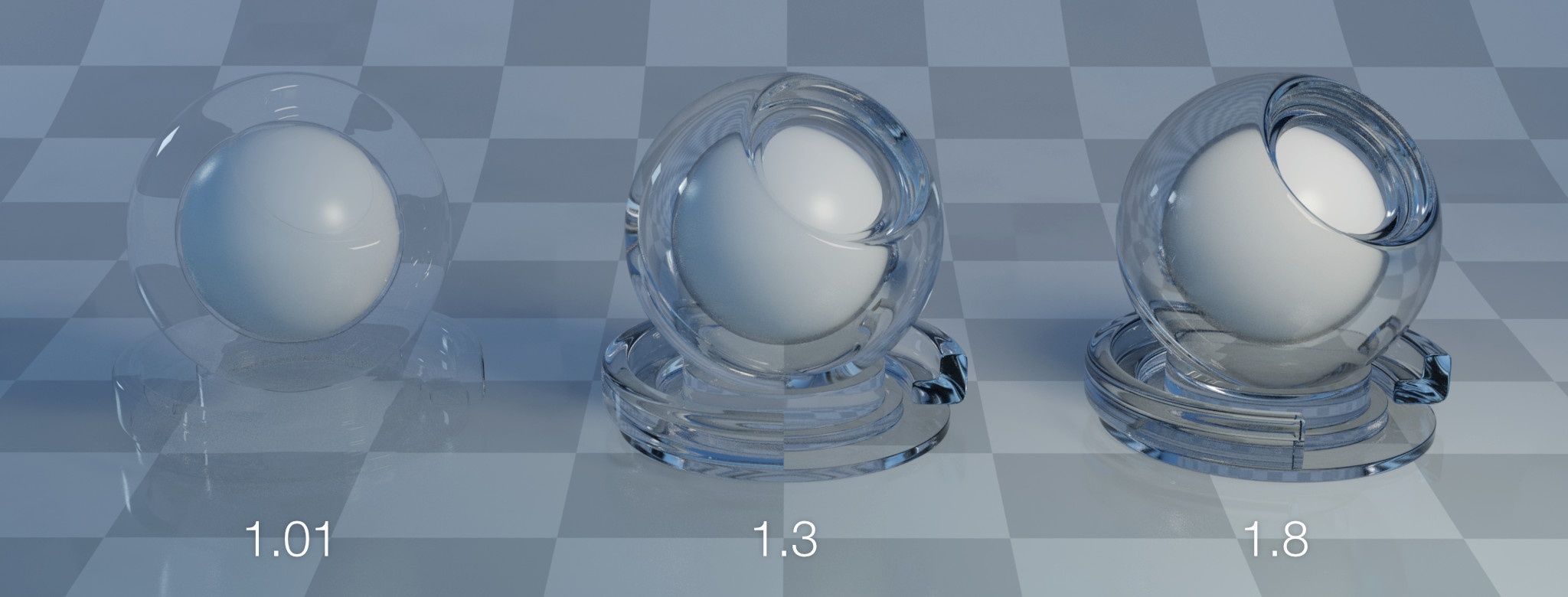...
Sets the roughness of the refraction. The smaller the value, the smoother is the surface. Higher values can be used to emulate "ground glass" and also help emulate more complex material interiors.
Transmittance
This parameter is a more user friendly way to specify the absorption of the material. It specifies the colour that passes through the volume. Note how coloration varies with volume thickness, contrary to the refraction color parameter which is constant through the slab. This is due to an exponential falloff in such volumes.
IOR
Sets the index of refraction for refractions.
| Info | ||
|---|---|---|
| ||
It is impossible for real world materials to have different IOR for reflection and refraction. It is useful in a context where 3D objects are not modelled properly. A good example is a soap bubble: the walls of the bubble are so thin that they are usually modelled using a single surface. In this case the IOR for refraction has to be set to 1 to simulate such a thin medium but the reflection could be set to a value higher than 1. |
...



